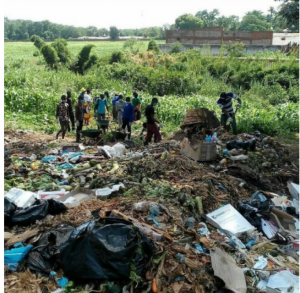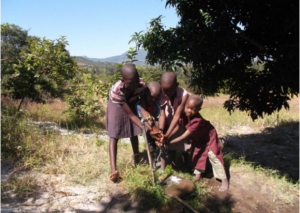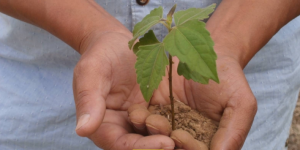Tunrada Piddon
During the PhotoVoice project, a participant (Leo), a male friend who is 28 years old, was my participant. The questionnaire was shared with him over the phone in maintaining the social distance at these times of the COVID 19 pandemic. The friend agreed to this consent and was able to send the different pictures with presentations on health and the environment. Fidel agreed to be given a made-up name and could provide the presentations in about one and a half weeks. Alongside this, he provided explanations on all of them with a non-partisan approach. In doing so, we agreed to maintain research ethics and standards.
Further, it was confirmed to my participant that the research was for learning purposes and, as such, would not consider responding to an intolerable issue. In acknowledging the consent form, these were the questions agreed upon by my participant: I have read and understood the information needed for this PhotoVoice project. The participant agreed to take part in this project, in which case he would provide pictures and statements, and those pictures and would be used in the PhotoVoice project. The agreement was made to only provide three photos and was to be sent by phone.
This photo of the composite site was taken when the participant was on their journey across to a market. The photo was informed of the usual rains that normally blocks the river where damping happens and hence making the bridge impassible due to the overflow of the river. The participant (Fidel) took this photo because of participating in the project, which would clear the garbage and allow water to flow freely downstream. Accordingly, the participant intended to work on a project aimed at providing clean water in a healthy environment. The town was surrounded by the river and, in the long, could pose health challenges to the occupants. Environmental awareness on the need for proper disposal of wastes should be taught to the various communities to avoid being infected by diseases associated (Chan, Chan & Cheung, et al. 2016). Therefore, the project enables us to relate to the best practices of waste disposal and management and helps us to analyze how filthy and unpresentable the environment may appear if we remain careless with our practices.

A picture of young children washing their hands with running tap water.
The photovoice explains the project that was put in place to provide clean water for the person around. The children shown were drinking the tapped water. The PhotoVoice was taken during an evaluation process after the project was installed, and so the display of some of the local beneficiaries. The participant, in this case, chose to use the digital and photographic platforms to boost the process of the project’s implementation and create awareness on hygiene practices. In my view, photography was aimed at giving information to the local community on the best practices that have been brought about by the WASH program. Therefore, it was a tool to help in demonstration and the long run to provide reports on how the project has helped the society.
The children in the photography reminded the community of the best practices of handwashing using running water and so the disposal of germs that may be in somebody’s hands. Through the photography, the participant of the project informed of owning the program, and as such, they could see them practicing WASH programs. The participant could tell over the phone that “The picture I am sending to you was taken while young children were washing their hands with a running tap water.” Analytically the children were considered in this case because they are good ambassadors in spreading information. Additionally, children are not forgetful and would copy and master anything that they have been subjected to. Young people from a larger part of the population and would be the best group to be involved. Lastly, it allows us to understand analyze the precautions and preventions that need to be undertaken for hygiene-related diseases like cholera and COVID19, among others. 
Picturing a young tree to be planted in soil.
The participant in such a project is carrying a young tree in demonstration of the need to protect our environment and natural resources. The tree is carried by a lady in which case tries to affirm the need to involve and encourage our ladies to climb up to higher positions in society and management. In essence, the PhotoVoice was used in the tree planting program to create awareness of the importance of trees in our surroundings. The project, as reported by the participant, was meant to train ladies and increase their voices in matters of community engagement and development (Conde, Sastre, & Franco, et al., 2018). In the analysis, women can have encouraged after seeing the pictorials and share their experiences and challenges when it comes to leadership roles. The project is to ensure that local leaders are given priority to champion the various developments without undermining any gender. Further, it encourages different groups to participate in activities aimed at conserving and protecting the environment.
In the PhotoVoice, there is a voice to inform the society on land reclamation activities. Also, it presents a platform to actualize what afforestation process and relate the bad states of land in the event of deforestation. The belief is that we can work together and corporate these actions as learned in the classroom by sharing knowledge with our community.

